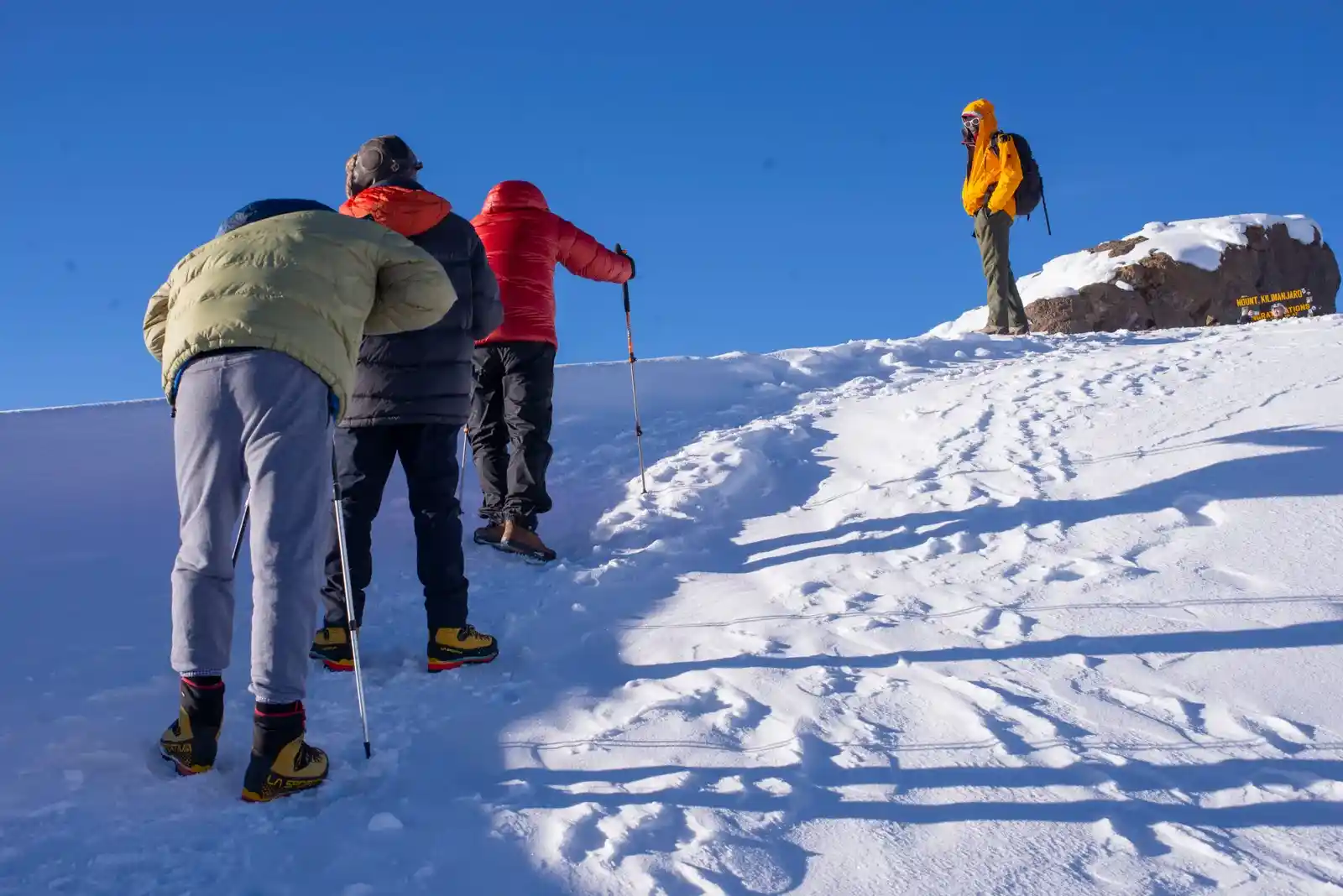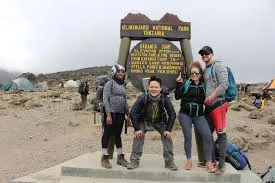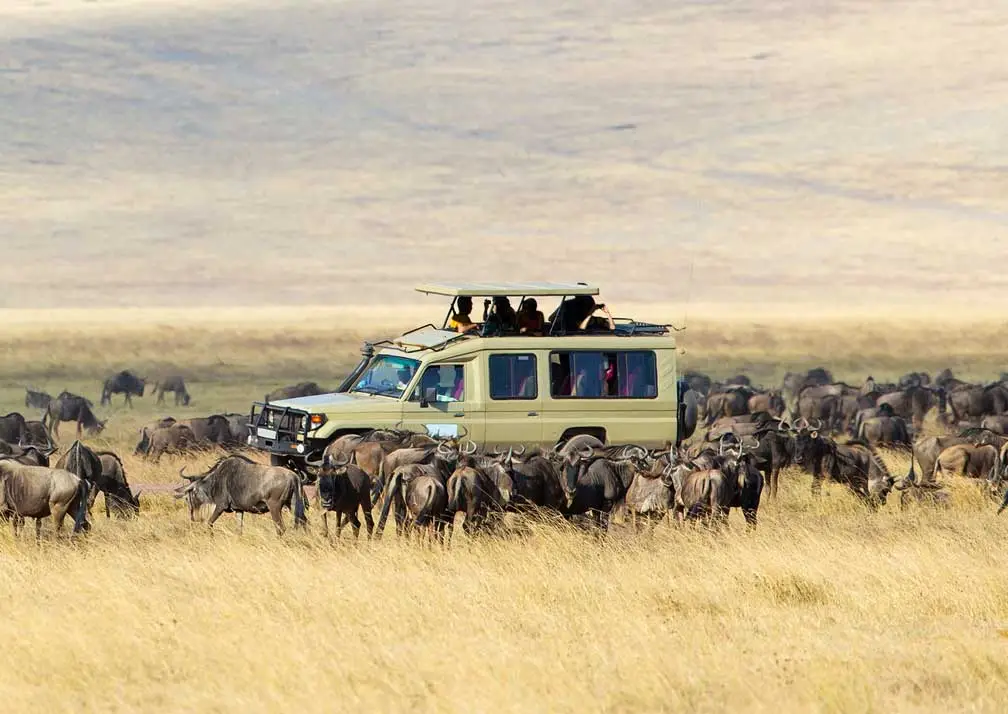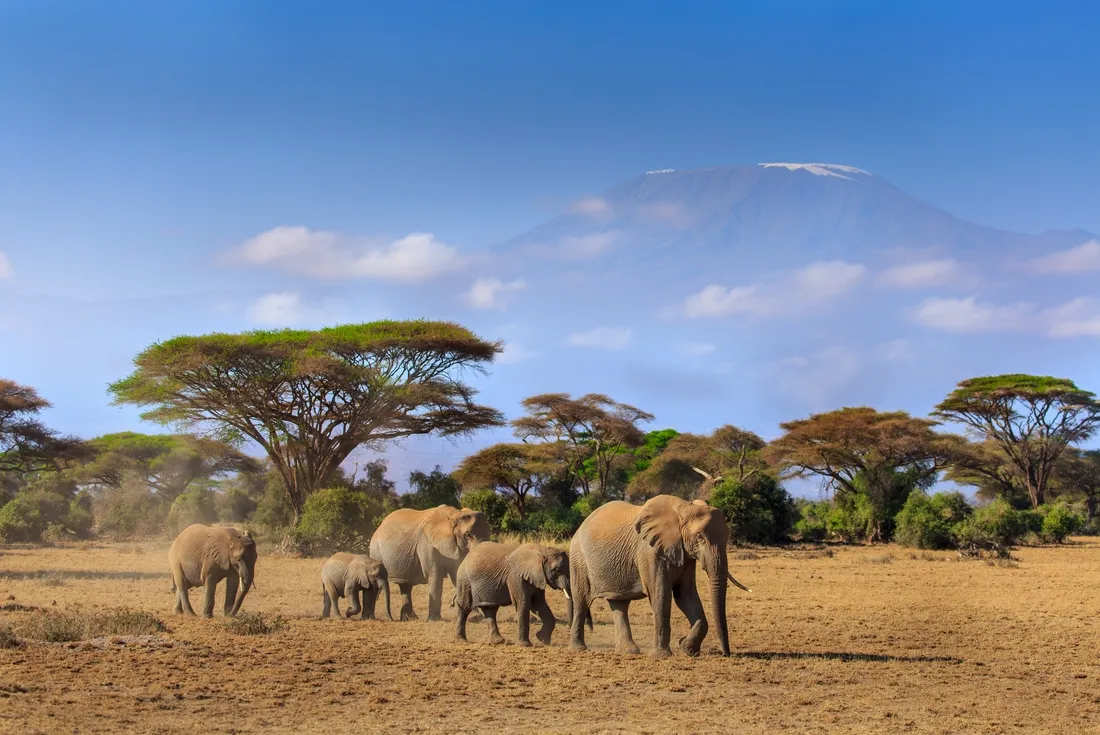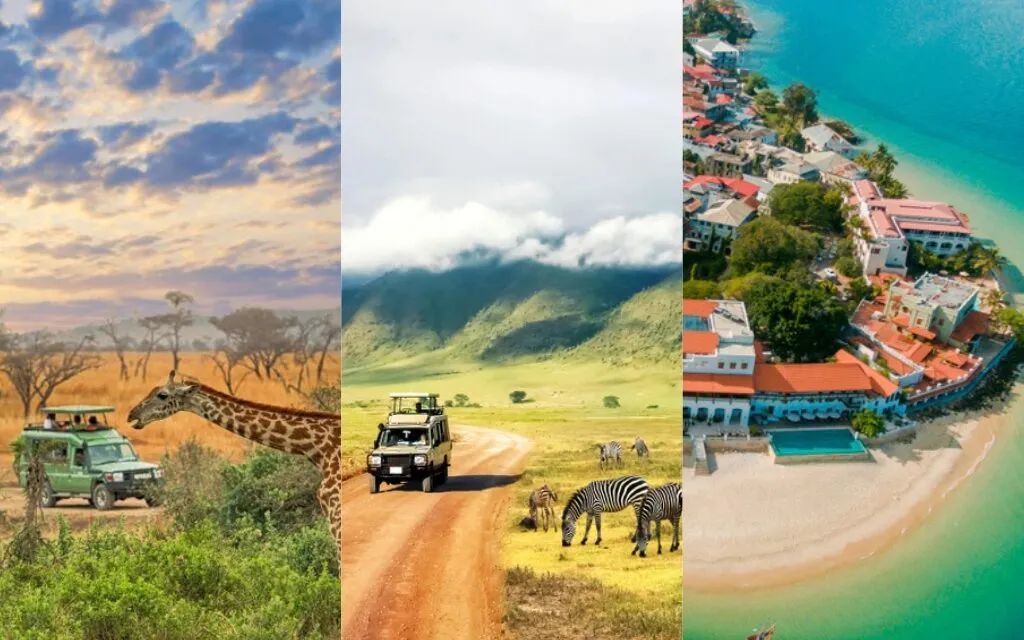The Most Complete Kilimanjaro Climbing Guide (2026 Edition)
This is the Most Complete Kilimanjaro Climbing Guide and your ultimate resource for planning a successful ascent of Africa’s highest peak. This guide covers every essential aspect, from choosing the best route, understanding acclimatization, and packing smart, to nutrition, hydration, and daily trekking strategies. Learn how to prepare physically and mentally, select reliable guides and tour operators, and handle altitude challenges safely. Whether you aim for a 5-day Machame trek or a 9-day Lemosho adventure, this guide equips you with expert tips, detailed itineraries, and practical advice. Everything you need for a safe, rewarding climb is here. This Kilimanjaro climbing guide 2026 breaks down everything you need for a successful summit of Uhuru Peak – from choosing the best route and understanding Kilimanjaro climbing cost 2026 to building a solid Kilimanjaro training plan and avoiding altitude sickness. Whether you're a first-timer wondering how to climb Kilimanjaro or a seasoned trekker, we've got the facts, tips, and checklists to get you to 5,895 meters safely.
Start Planning Your Climb
Climbing Mount Kilimanjaro is a bucket-list adventure that draws over 50,000 trekkers annually to Kilimanjaro National Park in Tanzania. Standing at 5,895 meters, this dormant volcano offers a non-technical but physically demanding high-altitude trekking experience. Success depends on route choice, preparation, and acclimatization. This Mount Kilimanjaro climbing guide provides practical, step-by-step advice based on operator data, park statistics, and climber reports to help you plan a safe and rewarding journey.
Where Is Mount Kilimanjaro?
Mount Kilimanjaro is located in northeastern Tanzania, just south of the Kenyan border, within Kilimanjaro National Park – a UNESCO World Heritage Site. The mountain rises dramatically from the surrounding plains at approximately 900 meters above sea level to its summit at Uhuru Peak (5,895m). The nearest major town is Moshi, while Arusha serves as the primary gateway for international flights and tour departures. Coordinates: 3°04′S 37°21′E.
The park covers 1,688 square kilometers and encompasses diverse ecosystems: cultivated foothills, montane forest, heath and moorland, alpine desert, and the arctic summit zone. Access is via Kilimanjaro International Airport (JRO), about 45 km from Moshi. All climbs start from one of seven official gate entrances, with most operators providing transfers from Arusha or Moshi hotels.
- Nearest airports: Kilimanjaro (JRO), 1-hour drive to gates; Nairobi (NBO) with shuttle transfer (6-7 hours).
- Visa requirements: Most nationalities need a Tanzania tourist visa ($50-$100 USD, obtainable on arrival or e-visa).
- Park entry: Mandatory registration at gates; Kilimanjaro park fees are $70/day conservation fee + $20/day camping/hut fee (TANAPA, 2026).
Geologically, Kilimanjaro is a stratovolcano with three cones: Kibo (summit), Mawenzi, and Shira. Its glaciers are rapidly retreating – down 85% since 1912 (NASA Earth Observatory) – making a 2026 climb potentially one of the last chances to see significant ice fields.
Local communities include the Chagga people, whose terraced farms surround the lower slopes. Porters and guides are predominantly from these communities, supporting Tanzania's trekking economy that employs over 20,000 locals annually.
Best Time to Climb Kilimanjaro (2026 Update)
The best time to climb Kilimanjaro aligns with Tanzania's dry seasons when trails are less slippery and views are clearest. Kilimanjaro weather by month varies significantly due to the mountain's microclimates.
- January-March (Warm & dry): Peak season; 15-25°C at base, -5 to -10°C at summit. Excellent visibility; full moon climbs popular (Jan 13, Feb 12, Mar 13, 2026).
- June-October (Cool & dry): Second high season; 10-20°C base, -7 to -15°C summit. Clear skies; July-August busiest.
- April-May (Long rains): Avoid; heavy rain, snow at summit, low success rates.
- November (Short rains): Possible but cloudy; December improves.
Shoulder months (late May, early June, late October) offer fewer crowds and lower costs (10-15% discounts). Temperature drops 6.5°C per 1,000m ascent; expect rain at lower elevations year-round. Wind chill on summit night can feel like -20°C.
Success rates are 10-15% higher in dry seasons due to better trail conditions and energy conservation (Kilimanjaro Climbers Report, 2024). Book 9-12 months ahead for peak dates.
2026 considerations: Climate models predict slightly warmer dry seasons; monitor glacier retreat via satellite imagery. Full moon dates enhance summit views and safety.
Kilimanjaro Routes Overview (All 7 Routes Explained)
There are Seven official Kilimanjaro Climbing routes offer varied scenery, difficulty, and acclimatization profiles. Success correlates strongly with days spent ascending (longer = better). Here's a detailed breakdown of Kilimanjaro routes explained:
Machame Route (“Whiskey Route”)
The most popular route (35% of climbers), known for stunning scenery through five climate zones. 6-7 days; 62 km. Starts at Machame Gate (1,490m), ascends via Shira Plateau, Lava Tower (4,630m), and Barranco Wall. High point before summit: Barafu Camp (4,673m).
- Pros: Scenic diversity, good acclimatization (climb high, sleep low), 85% success on 7-day version.
- Cons: Steeper sections, crowded campsites.
- Difficulty: Challenging; Barranco Wall requires scrambling (non-technical).
Lemosho Route
Premium scenic route starting on the western side. 7-8 days; 70 km. Remote first days through forest and Shira Plateau, joins Machame at Lava Tower. Excellent for Kilimanjaro acclimatization.
- Pros: Least crowded initially, wildlife sightings, 90% success rate.
- Cons: Longer access drive, higher cost.
Marangu Route (“Coca-Cola Route”)
Only route with hut accommodation. 5-6 days; 72 km round trip. Gentler gradients but poor acclimatization profile.
- Pros: Huts with beds/solar lights, shortest option.
- Cons: 50% success on 5-day; crowded; same path up/down.
Rongai Route
Northern approach from Kenya border. 6-7 days; 73 km. Dry, less scenic but good for rainy season.
- Pros: Remote, gentle ascent, wildlife.
- Cons: Less varied scenery, long transfer.
Northern Circuit Route
Longest route (8-9 days; 90 km) circling northern slopes. Best acclimatization; 95% success.
- Pros: Highest success, quiet trails, full mountain traverse.
- Cons: Most expensive, physically demanding distance.
Shira Route
Similar to Lemosho but starts higher (3,600m). 7-8 days. Vehicle access to plateau.
- Pros: Quick altitude gain initially.
- Cons: Risk of altitude issues starting high.
Umbwe Route
Steepest and most direct. 6 days; 53 km. For experienced trekkers.
- Pros: Shortest distance, challenging.
- Cons: 60-70% success; strenuous.
Kilimanjaro Cost in 2026
Kilimanjaro climbing cost 2026 ranges from $1,800 to $7,000+ per person depending on route, duration, and operator. Park fees are fixed by TANAPA. Kilimanjaro Cost varies depending on route choice, park fees, crew support, gear, and travel logistics. When planning your climb, consider what’s included—tents, meals, guides, porters, and rescue fees all influence the overall Kilimanjaro cost. Budget operators may seem appealing, but extremely low prices often mean compromised safety or poor working conditions for porters. A reasonable Kilimanjaro cost typically reflects quality equipment, trained mountain crews, and proper acclimatization schedules. Always compare packages carefully, check reviews, and ensure the operator is licensed. Understanding the full Kilimanjaro cost helps you choose a safer, more rewarding climbing experience.
2026 updates: Park fees unchanged since 2017; expect 5-10% inflation in operator costs. Book early for peak season savings.
Training Plan for Kilimanjaro
A structured Kilimanjaro training plan starts 3-6 months before departure. Focus on cardiovascular endurance, leg strength, and mental resilience.
- Months 1-2: 3-4 cardio sessions/week (45-60 min hiking with pack); stair climbing; squats/lunges 2x/week.
- Months 3-4: Weekend hikes 4-6 hours with 10-15kg pack; elevation gain 500-1,000m.
- Final month: Back-to-back long hikes; practice poles and boots.
Ideal fitness: hike 8-10 hours with 15kg at 3km/h. Include core work, yoga for balance. Test gear on training hikes. Consult doctor if over 50 or with medical conditions.
What is Altitude Sickness? Everything to Know About it
Altitude sickness, also called Acute Mountain Sickness (AMS), occurs when your body struggles to adapt to lower oxygen levels at high elevations. It typically appears above 2,500 meters (8,200 ft) and can cause headaches, nausea, dizziness, fatigue, and shortness of breath. Severe forms—High Altitude Pulmonary Edema (HAPE) or High Altitude Cerebral Edema (HACE)—are life-threatening and require immediate descent. Proper acclimatization, gradual ascent, hydration, and avoiding overexertion help prevent altitude sickness. Knowing about altitude sickness before your trek ensures you recognize warning signs early and take precautions for a safer, more successful summit experience.Kilimanjaro altitude sickness guide: Acute Mountain Sickness (AMS) affects 75% of climbers above 4,000m; 1 in 1,000 develop life-threatening HACE/HAPE. Knowing what altitude sickness is is crucial for safe trekking on mountains like Kilimanjaro, where altitude poses the biggest challenge.
- Symptoms: Headache, nausea, fatigue (AMS); confusion, ataxia (HACE); cough, breathlessness (HAPE).
- Prevention: Ascend slowly (300-500m/day sleeping elevation); hydrate 3-4L; Diamox (125mg 2x/day from Day 1).
- Treatment: Descend 500m immediately; oxygen; dexamethasone for HACE.
Daily pulse oximeter checks standard with reputable operators. Longer routes reduce risk by 30-40%.
Kilimanjaro Packing List (2026 Guide)
Kilimanjaro packing list essentials (rent locally to save weight):
- Clothing: Base layers, fleece, waterproof jacket/pants, down jacket, gloves, hat, 4-5 pairs socks.
- Footwear: Broken-in boots (waterproof), gaiters, camp shoes.
- Gear: 80-90L duffel (porter-carried), 20-30L daypack, sleeping bag (-15°C), trekking poles, headlamp.
- Personal: Sunscreen (SPF 50+), lip balm, 3L water system, snacks, first-aid, toiletries.
Weight limit: 15kg per porter. Layering is key – temperatures range -15°C to 25°C.
Food & Accommodation on Kilimanjaro
On Kilimanjaro, food and accommodation are surprisingly comfortable, given the mountain setting. Most trekking routes offer mountain huts or tents with basic but clean sleeping arrangements. Meals are usually prepared by support staff, featuring a mix of local and familiar dishes—think rice, pasta, vegetables, and proteins—designed to provide energy and warmth. Breakfasts are hearty, lunches are packed for the trail, and dinners are hot and filling. Vegetarians and special diets can often be accommodated with prior notice. Staying hydrated and eating consistently is crucial for altitude acclimatization. Overall, climbers can expect simple, nutritious meals and reliable accommodations along their journey. Most routes use tented camps; Marangu has huts. Meals are cooked fresh: porridge, eggs, soups, pasta, rice, vegetables, fruit. Vegetarian/gluten-free available. 2,500-3,500 calories/day. Water boiled or treated.
- Tents: 3-person for 2 climbers; mess tent for dining.
- Facilities: Portable toilets (private on luxury trips); no showers.
Safety on Kilimanjaro
Safety on Kilimanjaro is essential for every climber, and understanding the key factors helps ensure a successful summit. Proper acclimatization, experienced guides, reliable equipment, and daily health checks all contribute to overall safety on Kilimanjaro. Always follow your guide’s instructions, hydrate well, and climb at a steady pace to reduce altitude risks. Choosing a licensed operator with trained mountain crews greatly enhances safety on Kilimanjaro, as they are equipped to monitor oxygen levels, manage emergencies, and make informed decisions. Preparing physically, packing correctly, and respecting weather conditions all play a major role in maintaining safety on Kilimanjaro throughout your trek. Kilimanjaro climbing safety is excellent with licensed operators. Ratio: 1 guide per 2 climbers; porters carry oxygen, first-aid, gamow bags. Evacuation by stretcher or helicopter. Crime negligible on mountain.
Summit Night – What to Expect
Kilimanjaro Summit Night is the most challenging yet rewarding part of the climb. Beginning around midnight, you ascend slowly in the cold, thin air, using steady breathing and deliberate pacing. A successful Kilimanjaro Summit Night depends on proper layering, hydration, and mental focus. Guides set a manageable rhythm, helping you navigate steep switchbacks toward Stella Point and onward to Uhuru Peak. With patience and determination, the sky brightens as you approach the summit. Understanding what to expect on Kilimanjaro Summit Night prepares you for the physical and emotional effort needed to reach Africa’s highest point safely. Midnight start from high camp (4,600m+); 6-8 hours to Uhuru Peak. Steep scree, -10 to -20°C. Headlamps, slow pole-pole pace. Sunrise at crater rim; final 45 min to summit sign. Descent same day to lower camp.
Kilimanjaro Success Rates (2026)
Kilimanjaro Success Rates depend on route choice, acclimatization time, operator expertise, and individual fitness. Longer routes generally offer higher Kilimanjaro success rates because they give climbers more time to adjust to altitude. Proper pacing, hydration, and following your guide’s instructions also play a major role in improving Kilimanjaro success rates. While no climb is guaranteed, choosing a reputable operator with experienced guides can significantly boost your chances of reaching the summit. Understanding Kilimanjaro success rates helps you plan wisely, select the right route, and prepare physically for a safe, successful ascent. Overall Kilimanjaro success rate: 65-70%. 5-day routes: 50%; 7-day: 80%; 8+ day: 90-95%. Women slightly higher success than men due to pacing (Kilimanjaro SAR data).
How Difficult Is Kilimanjaro?
Kilimanjaro is a non-technical climb, but its difficulty comes from high altitude, long trekking days, and rapidly changing weather. When asking how difficult is Kilimanjaro, remember that fitness, pacing, and acclimatization matter more than climbing skills. The mountain requires steady preparation, proper gear, and choosing a longer route for better adaptation. Many first-time trekkers reach the summit, yet the question how difficult is Kilimanjaro depends on your mental resilience and how well you follow your guide’s advice—walk slowly, hydrate, and rest properly. Understanding how difficult is Kilimanjaro helps you train smart and succeed safely.
Is Climbing Kilimanjaro Safe?
Yes it is safe to climb Kilimanjaro. Climbing Kilimanjaro can be safe when done with proper preparation, an experienced guide, and a well-structured itinerary. The main risks come from altitude, unpredictable weather, and fatigue—not technical climbing. Choosing a reputable operator, following a slow pace, staying hydrated, and using the right gear greatly improves safety. Longer routes also support better acclimatization, reducing altitude-related issues. While thousands summit successfully each year, safety depends on your fitness, awareness, and the professionalism of your mountain crew. With the right guidance and precautions, climbing Kilimanjaro is generally considered safe for most healthy trekkers. Fatality rate 0.03% (3-7 deaths/year from 50,000 climbers), mostly altitude-related. Choose KPAP-partner operators for ethical, safe practices.
Final Tips for a Successful Kilimanjaro Climb
To finish your Kilimanjaro preparations strong, focus on maintaining a steady pace, listening to your body, and staying mentally positive throughout the trek. Keep your gear organized, follow your guide’s instructions closely, and prioritize rest and hydration at every stage of the climb. Manage expectations, prepare for rapidly changing weather, and embrace the journey with patience and confidence. Below are the final tips to help you achieve a safe and successful summit on your Kilimanjaro adventure with Capable Africa Tours.
Final Tips for a Successful Kilimanjaro Climb
- Pace yourself and walk “pole pole” to conserve energy
- Hydrate consistently throughout each day
- Eat even when you’re not hungry to maintain strength
- Protect yourself from the sun with sunscreen, hat, and sunglasses
- Keep your layers accessible for quick weather changes
- Trust and communicate with your mountain guide
- Focus on breathing to help with altitude adjustments
- Rest well at every camp and avoid overexertion
- Stay mentally positive and motivated
- Double-check your gear each night for the next day’s hike
Ready to Climb Kilimanjaro in 2026?
Let Capable Africa Tours handle permits, gear, and expert guides for 100% focused on your summit success.
Get Free Quote – Climb Kilimanjaro SafelyFrequently Asked Questions: The Most Complete Kilimanjaro Climbing Guide
Related: Best Time to Visit Tanzania 2026 – Combine your Kilimanjaro climb with the perfect safari season.

